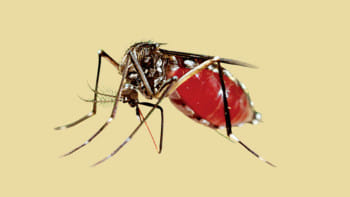'Wheat blast' threatens yield

Wheat blast disease has become a serious threat to grain quality and yield, incurring losses to the farmers in six southwestern districts.
Scientists and specialists after laboratory tests claimed that this is the first time in Bangladesh in which the seasonal crop got infected with this disease.
Officials at the Department of Agricultural Extension (DAE) and Wheat Research Centre (WRC) of the Bangladesh Agricultural Research Institute said they have examined samples from the fields and confirmed that the disease is a blast infection.
They identified the fungus that might have grown due to unexpected temperature fluctuation and several days of continuous rain in the first week of February.
Experts also have tested the seeds used to be sure of the infection, the officials said.
The affected districts include Kushtia, Meherpur, Chuadanga, Jhenidah, Jessore, and Magura.
DAE officials, who visited the affected fields, said Meherpur was the badly hit. Around 2,000 hectares of wheat fields had been damaged by the fungus.
According to farmers, they have marked yellow and black spots on the leaves and sheaves of wheat. After a few days, the spots got larger and spread over the entire plant.
At one stage, both the sheaves and flowers turned yellow and white, and finally the plant dried up without producing any grain.
Mustafizur Rahman, deputy director of Meherpur DAE, said farmers started informing them about the matter from mid-February.
“We told the higher authorities about the problem after visiting the fields,” he said.
A team, led by Paritosh Kumar Malaker, chief scientific officer of Wheat Research Centre in Dinajpur, visited the affected fields in Meherpur, Chuadanga, and Jhenidah on Wednesday.
“We have made pathogen tests using the diagnostic technique, called 'field pathogenomics', and confirmed the symptoms of the disease,” he said.
He said, "As it [disease] is the first infection in Bangladesh, we need to be more careful.”
Farmers and DAE officials said the areas experienced rain in the first week of February. After five to seven days, farmers observed spots on wheat leaves and sheaves.
This correspondent visited Garadoba, Saharbati, Dhankhola, Bamundi of Gangni upazila, and Khoksa, Chandbeel, Madandanga in Meherpur Sadar upazila and found a large number of affected fields.
Farmers Ripon and Mawla Boksh of Madandanga told this correspondent that they jointly cultivated wheat on five bigahs of land. About half of the crop was damaged. They have to incur a huge loss, they said.
Sources at the DAE divisional office in Jessore said farmers in the six southwestern districts cultivated wheat on around 58,135 hectares. Some 16,710 hectares are in Kushtia, 10,320 hectares in Jhenidah, 7,020 hectares in Magura, 5,810 hectares in Chuadanga, 4,400 hectares in Jessore and 13,875 hectares in Meherpur.
Mustafizur Rahman, deputy director of Meherpur DAE, said they were holding meetings with the farmers and distributing leaflets to create awareness among the farmers.
The DAE office also advised the farmers to spray Nativo and Folico on the affected fields.
He primarily estimated that 5 percent of the total production might be affected.
However, Chief Scientific Officer of WRC Paritosh Kumar said wheat production would decrease by around 10-40 percent.


 For all latest news, follow The Daily Star's Google News channel.
For all latest news, follow The Daily Star's Google News channel. 



Comments